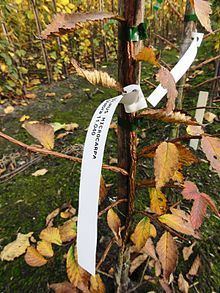Scientific name Ulmus microcarpa | Genus Ulmus Rank Species | |
 | ||
Similar Ulmus bergmanniana, Ulmus castaneifolia, Ulmus changii, Ulmus laciniata var nikko, Ulmus chenmoui | ||
Ulmus microcarpa was named and first described by the Chinese botanist L. K. Fu, who discovered the tree in the Chayu broad-leaved forests of south-eastern Xizang at altitudes of around 2800 m during the 1973 Qinghai - Tibet Expedition. Unlike the majority of Tibet, the Chayu region has a subtropical highland climate featuring warm, wet, summers and mild, dry, winters (avg. annual rainfall 807 mm). Commonly known as the Tibetan Elm, the tree was introduced to the USA in 2006, and the UK in 2013; it remains one of the rarest species of elm in cultivation.
Contents
Description
U. microcarpa can reach a height of 30 m in the wild, the trunk < 80 cm d.b.h.. The large oblong to elliptic leaves are 8.5–17 cm long by 5–8 cm broad with 5 mm petioles, likened by Fu to those of U. wallichiana and U. bergmanniana var. lasiophylla, but much smaller on juvenile plants. The leaves are borne on extraordinarily corky branchlets bestowing a highly unusual appearance. As its specific epithet implies, the suborbicular, glabrous samarae are small, < 8 mm across, the seed at the centre.
Pests and diseases
No information available; U. microcarpa was not known in the USA when the majority of Asiatic elms were screened for resistance to Dutch elm disease by the late George Ware at the Morton Arboretum, Illinois, in the early 1990s.
Cultivation
U. microcarpa is very rare in cultivation outside China, and accessions are currently restricted to two arboreta in the USA and three in the UK. The tree was one of 12 Chinese species under evaluation at the Morton Arboretum, Illinois, in 2009 by the late Dr George Ware.
